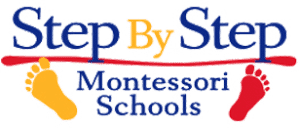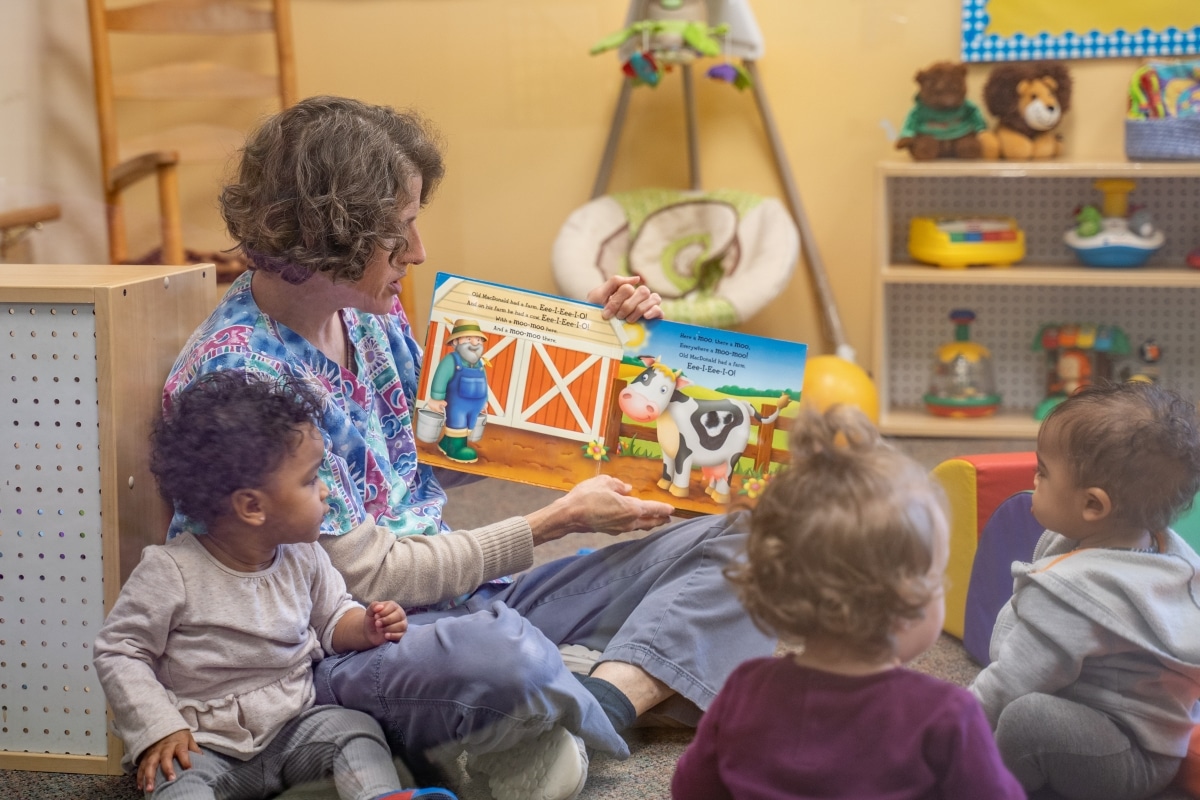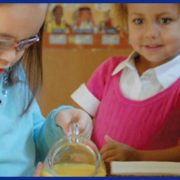By Amber Evans
An essential part of the Montessori method is practical life. These activities are an increasingly challenging series of motor tasks involving real life goals. In addition to helping children master everyday tasks, the aim of practical life activities is to develop a child’s independence, body control and coordination of movement, concentration and sense of order.
A common goal of all Montessori activities is independence. A child’s sense of independence builds each time they work on a practical life activity. As the become familiar with the activities, children no longer need to ask the teacher for help, which leads to their increased self-sufficiency and pride in completing an activity independently. Soon, they are able to show younger children how to work on the activities, further increasing their confidence and advancing their sense of responsibility.
All practical life activities have direct aims and indirect aims. The skills previously listed are all examples of indirect aims that focus mainly on personal development. Direct aims are the concrete, measurable outcomes. Practical Life offers the child multiple direct aims or goals that they are able to achieve through order and repetition.
Some common practical life activities in a Montessori environment:
Wiping up a spill
A lot of feelings arise when there is a spill; embarrassment, fear, disappointment, sadness or despair. Knowing what to do in a situation that causes lots of anxiety can make a huge difference. Creating a controlled spill, gathering materials needed to clean it up, the act of cleaning it up and using cleaning materials checks all the big boxes; independence, body control, concentration and sense of order. However, a child is not going to notice those. They with have the satisfaction that they cleaned it up, understand how to do it next time, and will be able to help a friend. All of these are direct aims that the children love!
Dressing frames
Dressing frames are square wooden frames with pieces or flaps or fabric that are held together with clothing fasteners. There are many that a child can choose from, such as buttons, snaps, zippers, ties, hooks or buckles. The dressing frames give children the opportunity to practice the tasks associated with dressing themselves. These are very useful when a child struggles with a certain article of clothing, most commonly zipping their coat. A child is able to practice and master the zipping of not only the frame but also their own coat!
Transferring with a spoon
Using two bowls and a spoon, this activity appeals to all children! The reason this activity is so wonderful for a child is because it is structured but offers so many possibilities. The child is presented with a bowl of beans or rice and shown the proper way to hold a spoon. Then they are asked to transfer the beans to the other bowl. It may sound boring but for a child, but the possibilities are endless: big scoops or one at a time, the type of spoon being used, the type of materials being used, and the sound of materials hitting the bottom of the bowl. The direct aims are great, but the indirect aims are even more exciting. When spooning materials, the child is taught to move from left to right, which trains the eye to move in that way for future activities, such as reading and math. Learning the proper way to hold a spoon will translate to be able to use silverware during meals properly, as well as understanding the proper 3pt pencil hold. The muscle control of bringing the spoonful of beans to the other bowl without spilling develops a hand eye coordination. If materials are spilled, the child is also taught to clean up after themselves.











